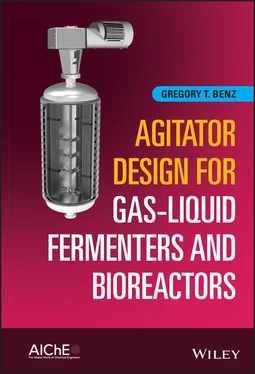Limit of Liability/Disclaimer of Warranty In view of ongoing research, equipment modifications, changes in governmental regulations, and the constant flow of information relating to the use of experimental reagents, equipment, and devices, the reader is urged to review and evaluate the information provided in the package insert or instructions for each chemical, piece of equipment, reagent, or device for, among other things, any changes in the instructions or indication of usage and for added warnings and precautions. While the publisher and authors have used their best efforts in preparing this work, they make no representations or warranties with respect to the accuracy or completeness of the contents of this work and specifically disclaim all warranties, including without limitation any implied warranties of merchantability or fitness for a particular purpose. No warranty may be created or extended by sales representatives, written sales materials, or promotional statements for this work. The fact that an organization, website, or product is referred to in this work as a citation and/or potential source of further information does not mean that the publisher and authors endorse the information or services the organization, website, or product may provide or recommendations it may make. This work is sold with the understanding that the publisher is not engaged in rendering professional services. The advice and strategies contained herein may not be suitable for your situation. You should consult with a specialist where appropriate. Further, readers should be aware that websites listed in this work may have changed or disappeared between when this work was written and when it is read. Neither the publisher nor authors shall be liable for any loss of profit or any other commercial damages, including but not limited to special, incidental, consequential, or other damages.
Library of Congress Cataloging‐in‐Publication Data
Names: Benz, Gregory T., author.
Title: Agitator design for gas–liquid fermenters and bioreactors / Gregory T. Benz, Benz Technology International, Inc., Ohio, US.
Description: First edition. | Hoboken, NJ, USA : Wiley, 2021. | Includes bibliographical references and index.
Identifiers: LCCN 2020051152 (print) | LCCN 2020051153 (ebook) | ISBN 9781119650492 (hardback) | ISBN 9781119650508 (adobe pdf) | ISBN 9781119650539 (epub)
Subjects: LCSH: Bioreactors–Equipment and supplies. | Fermentation–Equipment and supplies. | Mixing machinery–Design and construction. | Gas‐liquid interfaces.
Classification: LCC TP248.25.B55 B46 2021 (print) | LCC TP248.25.B55 (ebook) | DDC 660/.28449–dc23
LC record available at https://lccn.loc.gov/2020051152LC ebook record available at https://lccn.loc.gov/2020051153
Cover Design: Wiley
Cover Image: courtesy of the Author
I dedicate this book to my late father‐in‐law, Richard Durchholz, for inspiring me as an engineer and a person; to Wayne Ramsey, for mentoring me and giving me the opportunity to design the largest fermenters built by Chemineer up to that point; to Ms. Jian Li, my colleague and friend, for helping me to succeed in managing the China office and understanding Chinese culture, and my wife, Kim Benz, for encouraging me and supporting me in the massive undertaking of writing this book.
This is a book about fluid agitation, as applied to gas–liquid systems such as fermenters or bioreactors (We will use those terms interchangeably in this text.). The specific focus is on mechanically agitated systems, consisting of a closed vessel with a rotating shaft and impellers, as this is the most common and versatile way to achieve process objectives in a gas–liquid system. Though airlift and bubble columns have also been used, they will not be discussed in any detail here, as that is not the focus of this book.
Many books have been written about fluid agitation. Many books have also been written about fermentation. Much, though not all, of the material in this book has been covered in such books. However, all such books cover much more than agitator design for bioreactors. For example, typical books on agitation cover topics such as solids suspension (almost never an issue in fermentation), highly viscous systems (>50 000 cP), specialized impellers such as helical ribbons, anchors, augers, and others that have no use in fermenters, mixing in high‐yield stress fluids such as paper stock, etc. Likewise, books on fermenter design usually cover some topics on agitator design but also cover feeding strategies, reaction kinetics, cell metabolism, sensitivity to concentration and temperature changes, product recovery, and a whole host of other topics. Little has been published in such books about how to acquire the proper pilot data for agitator design, or how to minimize energy consumption.
The main purpose of this book is to be a single‐source reference on all the major issues related to agitator design for bioreactors. It is intended to save the reader time by avoiding the need to consult multiple references or sift through many pages of text to find what is needed specifically for fermenter agitator design. This book will also cover important related topics such as heat transfer, power cost, basic agitator mechanical design, and vendor bid evaluation.
Though some introductory fundamental theory is included, the main focus is on practical application of theory to real‐world agitator design. This book is more of a how‐to book than an academic treatise. The relative brevity of the book is intentional. It is hoped that the brevity will encourage people to actually read the entire book, not just skim an occasional page or chapter.
This book is intended to be useful for a variety of people. Since it is primarily a technical document, most readers will have a science or engineering degree. Many will be Chemical Engineers. Some will be chemists or microbiologists tasked with operating facilities in a way that can produce scalable data. Academic degrees among readers will vary from Bachelor up through Post‐Doc. Most readers will be employed by companies using bioprocessing to make valuable products as well as many making commodity products. Some will work for agitator manufacturers. If used as a course supplement, some will be college students or professors. Top‐level managers may want to skim the contents to make sure their teams are properly staffed and have a high‐level view of what their team should be doing. They will find the overview and flow chart described in Chapter 2especially useful. Chapters on energy use optimization will also be of interest to business unit managers. Information on bid evaluation should be of interest to procurement professionals. Although written primarily for users of agitation equipment and operators of fermentation facilities, engineers employed by agitator manufacturers will likely find it of interest as it provides a deeper window into the details of these applications than they are accustomed to, as well as how their bids may be viewed in a competitive environment.
A note about symbols: rather than make the reader refer to a list of symbols in the appendix, each chapter has the symbols used in that chapter at the end. That should save the reader some time. Also, it lets the author use the same symbol for different purposes in different contexts, reducing the number of symbols needed. For example, C means off bottom impeller clearance in most cases, but in the context of mass transfer correlations, it is used as an exponent, and it can also mean dissolved gas concentration.
Most of the book is focused on gas–liquid agitation, as that is the controlling parameter for most bioreactors. By that I mean the agitator is primarily designed to disperse gasses into liquids. This does not mean evolving gas from solution, which is a separate case. The fundamentals presented are applicable to other processes as well, such as miscible liquid blending, but design procedures for these problem categories are not presented here.
Читать дальше












